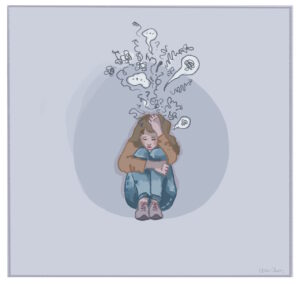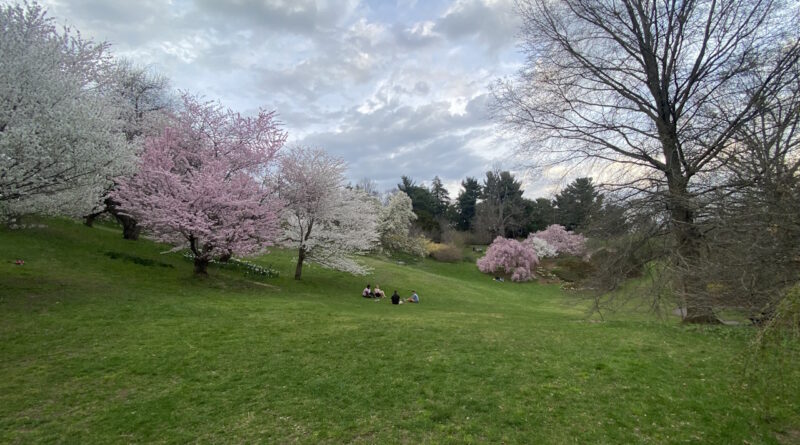Cultural Crossroads
Cultural Crossroads: Tackling Anxiety in Hispanic Youth
by Lauren Eisner
 It’s normal to feel anxious sometimes, but if these feelings are starting to interfere with daily activities, your child may have an anxiety disorder.
It’s normal to feel anxious sometimes, but if these feelings are starting to interfere with daily activities, your child may have an anxiety disorder.
What is anxiety? Anxiety is a feeling of nervousness or unease about situations that do not have a certain outcome (1). Sometimes a healthy dose of anxiety can push you to study harder for a test or get more hours in on the field before a big soccer match. In other cases, anxiety can become something that feels unmanageable, and can interfere with daily life.
People of any age can be affected by anxiety. Anxiety disorders are the most common mental health conditions in children, affecting one in eight children according to the Anxiety and Depression Association of America (2). Data from the National Comorbidity Survey – Adolescent Replication Supplement has shown that Hispanic youth are at the highest risk for mood/anxiety disorders compared to their ethnic counterparts. Specifically, nearly 11% of Hispanic youth (ages 12-17) report anxiety (3). Barriers in addressing childhood anxiety in the Hispanic community include social stigma around mental health and trouble accessing care due to financial, insurance, or language barriers.
When a child is experiencing anxiety, it might look different than what you would expect in an adult. Whereas adults with anxiety may have an easier time articulating their feelings, children often express anxiety behaviorally, exhibiting increased irritability or difficulty concentrating. In children, physical symptoms of anxiety include stomachache and headache, whereas in adults, physical symptoms include dizziness, tiredness, or palpitations (4)(5).
If you think your child is experiencing anxiety, there are ways you can help. Create a safe and supportive environment so your child feels free to talk about their anxiety. Encourage the development of coping skills, healthy habits, and relaxation techniques. Children’s Hospital Colorado provides an excellent resource with coping strategies and relaxation techniques. They recommend self-soothing, distraction, emotional awareness, and mindfulness practices. More resources are available below (6).
to talk about their anxiety. Encourage the development of coping skills, healthy habits, and relaxation techniques. Children’s Hospital Colorado provides an excellent resource with coping strategies and relaxation techniques. They recommend self-soothing, distraction, emotional awareness, and mindfulness practices. More resources are available below (6).
Finally, it is always okay to reach out to a professional for assistance. Cognitive Behavioral Therapy (CBT) can help children learn to manage anxiety by challenging thoughts and behaviors. Although CBT is highly effective for children with anxiety, medications are also available for those who do not improve with CBT (7). MHAWNY.org is an excellent site to start exploring options for professional help (8).
For more resources, look at the local websites listed below:
www.namibuffalony.org
www.namisyracuse.org
www.namiroc.org
Citations:
1. “Anxiety.” American Psychological Association, American Psychological Association, www.apa.org/topics/anxiety.
2. “Children and Teens – Anxiety and Depression.” Anxiety and Depression Association of America, ADAA, adaa.org/find-help/by-demographics/children/children-teens.
3. Yockey RA, King KA, Vidourek RA. School factors and anxiety disorder among Hispanic youth: Results from the 2016 US National Survey on Children’s Health. School Psychology International. 2019/08/01 2019;40(4):403-415. doi:10.1177/0143034319849621:
4. NHS Choices, NHS, www.nhs.uk/mental-health/children-and-young-adults/advice-for-parents/anxiety-in-children/.
5. NHS Choices, NHS, www.nhs.uk/mental-health/conditions/generalised-anxiety-disorder/symptoms/.
6. “Coping Skills for Anxiety.” Coping Skills for Anxiety | Children’s Hospital Colorado, www.childrenscolorado.org/health-professionals/professional-resources/practice-update/coping-skills-stress-anxiety/.
7. “Behavioral Treatment for Kids with Anxiety.” Child Mind Institute, 30 Oct. 2023, childmind.org/article/behavioral-treatment-kids-anxiety/.
 8. “MHA – Home Page.” MHAWNY, 10 May 2024, www.MHAWNY.org/.
8. “MHA – Home Page.” MHAWNY, 10 May 2024, www.MHAWNY.org/.
Lauren Eisner was born and raised in New York, New York. She graduated from Amherst College in 2019 and is now a medical student at the University of Rochester School of Medicine and Dentistry. She is a member of the LatinX Health Pathway and is passionate about improving healthcare in marginalized communities, particularly among incarcerated or previously incarcerated individuals. She is planning to pursue a residency in Emergency Medicine after graduating in 2025.



